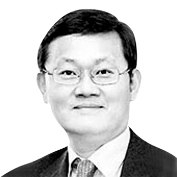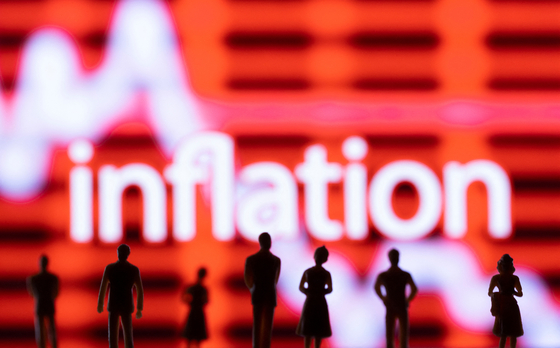Inflation is the priority

The author, former chief economist at the Asian Development Bank and a senior adviser for international economic affairs to former President Lee Myung-bak, is a professor of economics at Korea University.
Paul Volcker, who chaired the U.S. Federal Reserve from 1979 to 1987, is famous for having tamed the double-digit inflation of the 1970s. Upon taking office in 1979, he yanked up the fed fund rate by 4 percentage points to 15.5 percent and further to the historic high of 20 percent in 1981. Through the extraordinary hikes, the inflation rate that peaked at 14.8 percent on year came down to the 3 percent level. He had set a precedent in aggressiveness in monetary tightening. Many central banks since then posed as inflation fighters. The Fed and the Bank of Korea both maneuver to stabilize the inflation rate at 2 percent.
Politicians and people prefer low interest rates over higher levels as they favor a boom. Even at times of inflationary buildup in the economy, many cannot raise rates radically as they can be politically unpopular. In many countries, central banks are the last resort for price stability. Volcker stressed political independence and public confidence. He argued the central bank must earn the trust from people and carry out monetary policy without political considerations to stabilize prices. He reasoned that monetary policy must be executed in a fast and effective manner no matter how unpopular it may be. If price gains are anticipated to rise, preemptive action should be taken even if they do not appear alarming at the moment. The central bank must be able to remove the bottles of alcohol at the peak of a party.
The Fed raised the benchmark rate to 1.50 to 1.75 percent at the last meeting on June 15 in the steepest a 75-basis-point increase, the biggest jump in 28 years. The bank is expected to deliver a similar increase in July and keep on bumping up the rates to place it at maximum of 3.4 percent by the end of the year. The bank also lowered the outlook for economic growth to 1.7 percent from 2.8 percent. The stagflation warning has been raised if a recession is coupled with high prices.

The Fed has been criticized for dilly-dallying in responding to the inflationary danger. Pent-up demand for the normalization of lives from the pandemic restraints fanned price hikes as supply could not keep up with demand.
Aggressive spending by President Joe Biden’s administration to stimulate the economy has fueled inflation. In his contribution to the Washington Post in February last year, former Secretary of Treasury Larry Summers already warned of inflationary pressure not experienced by the current generation. But Fed Chair Jerome Powell stayed reserved, as he did not expect high inflation to last long.
The U.S. consumer price index was up 5 percent in May last year against the year-earlier period. Inflation expectations shot up after consumer faith in the Fed to sustain prices at around target ranges had been broken. The jump in energy prices from the Russia-Ukraine war helped fuel inflation. The Fed had no choice but to accelerate rate increases. Even if the hikes help contain prices, the toll on the economy could be heavy as it could trigger a recession. Many economic experts project a recession to arrive in the U.S. next year.
Accurate judgment of economic conditions and predictions are crucial in devising effective monetary policy. A central bank must be fully aware where the economy is in its cycle, why prices rise, and how long high inflation will remain. The bank also must accurately assess the impact of rate increases on stabilizing prices as well as on the economy and asset markets. If rates are raised too fast on misjudgment, the move can end up dampening the economy without much help in containing prices. If high inflation is left unattended, consumers would be pained and real estate and financial assets bubbles could be the result. Central banks must pay close attention to the expected inflation movement. If there are strong expectations for a further rise in prices, companies could raise prices of their products, and workers can demand wage hikes. Expectations for higher prices can fan inflation to feed a vicious cycle in prices.
The Korean economy is in peril due to expensive energy and grain imports coupled with fast rate increases in the United States The Korean consumer price index rose 5.4 percent on year in May, the highest since 2008. Groceries have become expensive and the cost of living is high. The expected inflation rate has been on the rise on the anticipation of further increases. Prices must be stabilized, jobs and income should be increased to sustain economic growth. The Bank of Korea must act in its role of inflation fighter. It must give confidence to the people that it will execute monetary policy using precise judgment and fast and effective action.
Translation by the Korea JoongAng Daily staff.










with the Korea JoongAng Daily
To write comments, please log in to one of the accounts.
Standards Board Policy (0/250자)